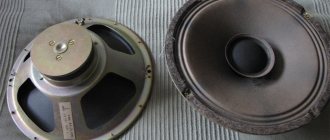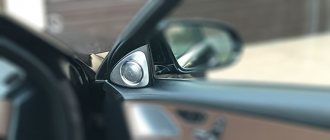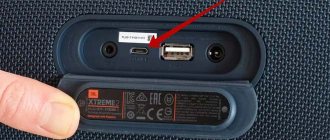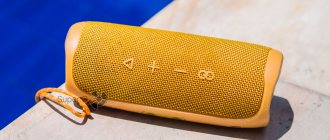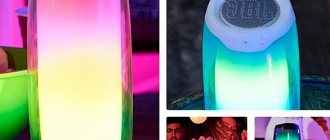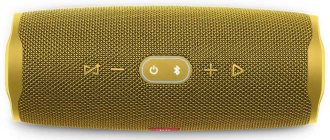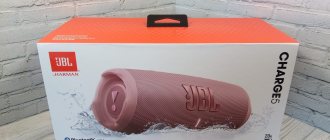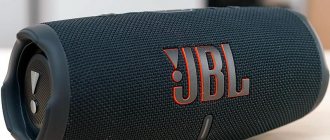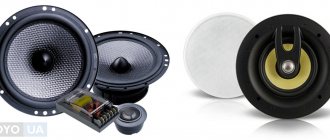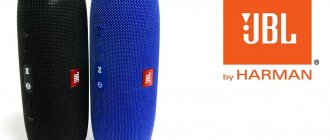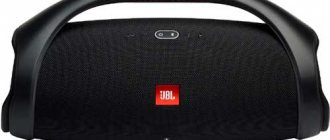As a rule, all new and used cars are sold with sound systems already installed. Many car enthusiasts are not satisfied with the technology that provides sound in the cabin. Some people don't like the sound quality, and used cars with sound systems may also have external mechanical defects. Therefore, most car enthusiasts prefer to replace the entire sound system or at least the speakers. Due to the abundance of proposals, how to choose speakers for a car or buy the best speakers for a car becomes a problem, especially for non-specialists.
What speakers are best to put in a car?
The official rating of car speakers does not always give an objective assessment of models of sound-reproducing equipment, speakers and columns. Therefore, before purchasing speaker systems, it is useful to browse websites and forums on car audio. Reviews from car enthusiasts will also help you choose which speakers are best to put in your car. Purchasing a high-end sound reproduction system and speakers will not solve the problem of obtaining high-quality sound if the car has a low-quality car radio. Therefore, before installing expensive and powerful speakers, you must first replace the playback device.
Installing good speakers in a car requires them to be paired with a high-quality low-frequency amplifier. To know how to choose the right speakers for a car, you need to know the types of speakers, the advantages and disadvantages of different designs, and the leading companies producing car acoustics.
Selecting and mounting speakers
installing speakers
So, the following rules to follow:
The speaker suspension must be made of rubber, as it will provide maximum shock absorption and better sound quality.
In front, spaced-out acoustics will sound best, that is, a system that is installed with separate tweeters.
For more surround sound, speakers should be installed in the rear of the car, the diameter of which reaches 17-20 centimeters. Such speakers will provide spacious, powerful sound in all ranges.
The mount for the speakers should be very rigid, since with a powerful sound they can unwind and start to rattle, or the mount will become loose and again there will be extra noise that will ruin everything.
It is best to make a special podium for the front speakers; this will allow you to achieve even greater quality and volume, but this action is not necessary if you do not want to make major design changes to the interior.
What speakers to put in the car
Car speakers are usually divided into three groups:
- Wideband acoustics
- Coaxial speakers
- Component systems
Wideband acoustics consists of a single speaker that reproduces almost the entire range of sound frequencies. The best car speakers have a lower limit of about 40-50 Hz and up to 12-15 kHz in high frequencies. Car audio systems with one speaker are the easiest to install. The design of the diffuser of a wideband speaker does not allow for good reproduction of low and high frequencies at the same time, therefore, at the edges of the audio range there are small blockages in the frequency response. Such acoustics can create an even sound background in a car, but are not suitable for high-quality music playback.
Coaxial car systems are in demand among most car enthusiasts. They provide good playback quality and are easy to install. Structurally, such a system is a broadband loudspeaker, in the central part of which, on a special bar, a small-sized high-frequency speaker is installed. In some models, the number of central heads can reach three, when in addition to the high-frequency tweeter, there are two mid-frequency heads on the central speaker. In this case, the acoustics are connected to the amplifier not directly, but through a crossover, which divides the entire sound range into bands according to the number of speakers. Which speakers are best to put in a car depends, first of all, on the requirements for playback quality.
Broadband
The frequency range perceived by the human ear, as already mentioned, ranges from approximately 20 Hz to 20 kHz. The most logical thing would be to have a speaker that can reproduce it in full. And there are such dynamics. They are called broadband.
The question is how well they are able to work at the extreme frequencies of this range. The fact is that in order to effectively reproduce low frequencies, the diffuser of a classic speaker must be quite large. For example, for a frequency of 40 Hz its diameter should be about 30 cm. This is quite simple to implement.
Wideband speaker ScanSpeak 10F/4424G00
But at high frequencies, such a diffuser simply will not be able to “have time” to transmit vibrations over its entire surface. This is why, more often than not, full-range speakers are the result of a compromise.
For high-quality reproduction of the upper part of the frequency range, an additional high-frequency diffuser is often glued into the center of the diffuser of a broadband speaker - a “horn” (cone-viser, “pipe”), which is capable of reproducing “fast” vibrations while the main, large diffuser works much more slowly.
Widebands used in audiophile systems are the subject of serious engineering developments bordering on art. Here, materials with the highest possible parameters and know-how are used, which still make it possible to obtain a full-range driver.
Lii Audio 2PCS Fast-10 Full Range Speaker
The most problematic thing for a full-range speaker is reproducing the extreme frequencies of the audible range. If a broadband speaker is capable of operating in the range of 60–16000 Hz with an unevenness of ± 10 dB, this is already a good result.
At the same time, due to the simplicity of the design and the absence of filters (crossovers), a speaker system with a wideband speaker is capable of demonstrating high sensitivity - from 90–92 dB and higher. This makes speakers with full-range drivers especially popular among fans of tube amplifiers, which, as a rule, have limited power.
In this regard, the voice coils of such broadband speakers have increased resistance. Generally accepted values for all other speakers intended for installation in acoustic systems are from 2 to 8 Ohms.
In addition, it is the broadband speaker that is as close in its parameters as possible to a point sound source - an ideal acoustic object from the point of view of its localization. The direction to the source in this case is determined by the listener as accurately as possible. Such an emitter allows you to create the most accurate stereo stage (sound stage), since there is only one sound source in the stereo channel and it has a minimal area.
On the other hand, the simplest speaker with a broadband speaker is the cheapest solution, but in this case there is no need to talk about full-range playback.
The best speakers for the car
For high-quality sound reproduction, the car is equipped with component speaker systems. To know which speakers to choose for your car, you need to understand their main characteristics. There are several main parameters:
- Power
- Power limit
- Coil resistance
- Frequency range
- Sensitivity
What power speakers should you choose for your car? Loudspeaker power plays a subjective role. Some car enthusiasts believe that the higher the volume, the better the sound. This is not entirely true. The quality of sound reproduction largely depends on the following factors:
- Placing speakers in the car
- Proper noise and vibration insulation
- Radio and amplifier parameters
You can find out which speakers are best for your car by carefully reading the product documentation. Some manufacturers indicate enormous speaker power, reaching up to a kilowatt, but this peak power is also overestimated. You need to be guided by the nominal parameter, which determines the quality of sound reproduction. Which speakers are best placed in the speakers is determined by the output power of the sound reproduction system. The total power of the speakers operating on one channel should exceed the power of the amplifier or radio by 15-20%. If it is less, the sound will be reproduced with distortion. The coil resistance can be 2, 4 or 8 ohms. Other values are rare. The speaker impedance is indicated in the documentation for the amplifier. If a value of 4 ohms is specified, then when connecting a speaker with a lower resistance, the volume will increase. Which car speakers are best to choose also depends on the range of reproduced frequencies.
Full range speaker design
There are two main types of universal broadband speakers - with a central cap and a cone-visor “pipe”.
The first design is more like a conventional single cone dome speaker.
Rice. 2. Visaton B 200/6 full-range speaker with central cap
But the structure of the second variation of the speaker is more complicated, again the same 4A-28. Such a driver contains two cones: a large one, like in conventional speakers, and a second one, built inside the large one.
The diaphragm should be of medium size with moderate fluctuations. Otherwise, high-frequency sound will receive more distortion. As for the bass, the solution is to increase the size of the cone, while maintaining the same stroke, but with a high-quality diffuser.
Today, there are many options not only for the design of wideband speakers, but also for the materials used in the manufacture of diffusers. To minimize distortion, manufacturers go to any lengths. Some high-efficiency emitters distort low frequencies, while others require the use of a special box to increase bass. By using amplifiers up to 3 W in the designs of full-range speakers, high performance is achieved.
Since when using broadband speakers you want to listen to the entire frequency range (high, medium, low) with high quality (as far as possible), manufacturers use paper or a modern alternative to it - Kevlar - when making a diffuser. This way you can achieve much better results.
In addition, there is a unique experience of using leather as a suspension. For example, in the manufacture of Kondo RUTHY-1-2-4 and Ongaku speakers wideband acoustics, suede is used for suspension. An unusual approach, but excellent sound purity is achieved. In particular, a study was carried out on the ADVENT broadband, 2 bands: 25 cm + tweeter, closed box 60 liters.
A design feature of the speaker is the uneven tension of the skin in the RCA-TELEFUNKEN suspension. The closer to the diffuser, the higher the tension. The result is a quiet sound that is excellent in purity.
Rice. 3. Leather surround in the full-range speaker
Read more about leather suspension in the article “The Dignity of Quiet Sounds.”
Also interesting are studies of acoustics made with magnetized speakers. Combined with a tube amplifier and an additional horn, an incredible level of sound quality is also achieved. You can get acquainted with the original experience in the article “Telefunken” - life after death.”
In addition to paper, Kevlar and leather in wideband speakers, you can even use aluminum and resin to achieve sound quality in different ranges. Paper is still preferable, since, without having increased rigidity, it can reduce resonance. The effect is especially noticeable when the paper is coated with varnish.
The best speakers for cars
There is an opinion that component acoustics provide higher quality sound reproduction. But this is not entirely true. Good coaxial speaker systems will be able to provide better sound quality than poor component speakers. The top speakers for cars are compiled separately for different types of acoustics. The following brands lead the list of car speakers made from coaxial systems:
- Morel Tempo Coax 6
- Sony XS-FB1330
- Pioneer TS-1339
The best speakers for cars are Morel Tempo coaxial devices. This is a two-way design consisting of a full-range loudspeaker and a tweeter, which is mounted on a rotating hinge. This allows you to select the optimal direction of the sound flow and create a spatial sound picture inside the car.
The rating of car speakers continues. It produces high quality car sound systems. The main speaker in the XS-FB1330 model is equipped with a special diffuser, which significantly increases the output at low frequencies. This creates the effect of deep and rich bass. The maximum permissible power is 240 watts, but with short-term exposure it does not have any negative effect on the speaker design. The best car speakers are produced by . Model TS-1339 is a three-way design. Due to its dimensions, the acoustics can be easily installed in any car. The speaker provides frequency reproduction in the range from 40 to 20,000 Hz with minimal distortion. The disadvantage of the system is the lack of a protective grille.
Size
They all differ in size, which is very important in terms of acoustic design. You should not choose speakers that are smaller than 16 cm. Otherwise, you will not be able to achieve acceptable sound quality in the low and mid-frequency ranges. In relation to high-frequency frequencies, this recommendation should not be followed.
Attention! In order for the sound at low frequencies to acquire bass depth, speakers of considerable size are required.
If you are not going to use a subwoofer, then it is advisable to ensure that the front acoustics correspond to a size of 16–17 cm. The presence of a subwoofer can reduce the permissible parameters to 13 cm without loss of sound quality.
How to choose the right speakers for your car
A component speaker system consists of several loudspeakers that are placed in different places in the car interior. This allows you to get spatial sound with an immersive effect. Component acoustics can be purchased as a kit or you can choose the best speakers in your car yourself. Purchasing speakers for a car's sound system requires some knowledge of radio engineering, so most people buy ready-made kits. Component speakers typically include two loudspeakers and a passive LC filter or crossover. This is a broadband head, a high-frequency tweeter and a board with capacitors and inductors.
Some sets may consist of three speakers. In this case, the audio signal after the low-frequency amplifier is divided into three frequency channels:
- Short
- Average
- High
To choose the best speakers for your car, it is better to use the official rating or reviews of installed speakers.
Basic parameters of car speakers
Measurements of the main characteristics of speakers are carried out according to relevant standards.
Nowadays, the following speaker parameters are usually indicated: 1. Effectively reproduced frequency range. 2. Rated power. 3. Highest short-term power. 4. Sensitivity. 5. Nominal speaker resistance. 6. Resonant radio frequency speaker without acoustic design. 7. Good quality. 8. The most permissible dislocation of the voice coil. Speaker composition
A standard speaker contains three basic components: - a moving system, - a magnetic circuit, - a suspension.
Composition of the magnetic circuit: - magnet, - lower and upper flanges, - core.
The structure and special production technology of all of the above components differ quite significantly. It all depends on the purpose of the speaker head.
Top 10 speakers for cars
The top 10 speakers for cars include products from those manufacturers who are constant bestsellers. Their products are distinguished by the quality of sound reproduction and reliability during operation. The rating of car speakers is as follows:
- Hertz MLK 1650.3
- Morel Virtus 603
- Audison Prima APK 165
Which speakers to choose and install in the car also depends on the financial capabilities of the car owner. The kit consists of a 16 cm full-range loudspeaker, tweeter and crossover filter.
The polymer conical diffuser is reinforced with natural cotton, has low inertia and minimal deformation coefficient. The tweeter's sound membrane is made of microporous plastic. The crossover has film capacitors, which is a big plus, and the terminals allow the use of cables up to 4.0 mm2. The tweeter starts at 3,500 Hz, which allows you to organize interesting sound in the cabin.
Acoustics "Morel" differs from systems of a similar class in that it is three-way. The kit includes a mid-range speaker with a silk diffuser, which provides a clearly defined frequency band in the range of maximum perception by the human ear.
The Audison two-way acoustics have a rated power of 100 watts and a high sensitivity of 93.5 dB, which allows you to use it without an amplifier by connecting it to a standard radio.
How to choose amplifiers for channel amplification
What practical conclusions can be drawn from the above? 1. If you are selecting a wide-range amplifier for a midrange driver and want it to sound as loud as possible, take an amplifier with a rated power of approximately 3 times the speaker rating. If you don't load the speaker with bass and select the lower end of the 250Hz range, this amp will deliver no more than a third of its power to your midrange and will fully load the speaker. Get the loudest sound possible. If you lower the frequency of the lower end of the sound range, this will increase the power dissipated by the speaker. There may be smoke. If you lower the volume level or choose an amplifier with less power, the volume will also decrease. An amplifier for a bass speaker is selected according to the same principles - take the speaker rating and divide it by 0.6. You get the rating of the amplifier, which will fully load it in the range from 63 to 250 Hz. If you increase the lower limit, the power will decrease. If you increase the upper limit, the load on the speaker will increase. With tweeters everything is a little more complicated. The power rating is almost never known. But almost all modern horns are built on the same displacement, which can handle approximately 10-15 W of power. Their volume level is enough for most popular mids, such as X6 and the like. The lower limit of the HF range has recently been chosen to be at least 8 KHz, or even higher, so their power can be neglected and they can be selected only by sensitivity. More about sensitivity later. You should not choose 8-ohm budget tweeters; their sensitivity is much less than 4-ohm ones. The exception is professional horns like P.Audio 2. If you want to build a balanced 3-way system, select speakers with nominal powers in the proportion LF:MF:HF - 6:3:1 If the proportion is not respected, the maximum volume will be determined by the speaker whose the share is below optimal. For example, let's say you want to build a 3-strip with a power rating of 100 watts. The ideal solution would be to choose speakers with ratings: 60 W – woofer, 30 W – midrange speaker, 10 W – tweeter. 3. If you are building a 2-way front using midbass, select an amplifier with the same or slightly higher rating for it. You don’t have to worry about the power of the tweeter. If the high-pass filter “cuts” it above 5 KHz, which most often happens in 2-way systems, the power dissipated by the tweeters will be insignificant and can be neglected. It is not necessary to do channel-by-channel amplification in a 2-way system; you can connect the tweeter to the midbass in parallel, using the supplied capacitor, or make a slightly more complex filter. The load on the amplifier will not increase significantly. The total load impedance will be equal to the midbass impedance. 4. Very important! If you are building a 2- or 3-way system with channel amplification, you need to select amplifiers with the same power for all bands. Such amplifiers have the same gain factors and produce a signal at the same level at the output. A slight discrepancy between the volumes across the bands can easily be eliminated by adjustment. If amplifiers have different powers, then the maximum volume of the system will be determined by the weakest of them. For example, very often a powerful amplifier for the mids is purchased for the channel, and a Blaupunkt or Mystery amplifier with a rating of 50 W is purchased for the tweeters. A person chooses it, guided by the consideration: the power of the tweeter is much less than the power of the amplifier, and it is already enough. But, if the tweeter is connected through a capacitor filter or a digital filter in the processor head, it doesn’t matter - an amplifier with a rating of 50 W will not be able to produce more than 5 W of a clean signal and nothing can be done by adjusting it. Then the amplifier will clip, the “dirty” signal at the output will kill the tweeter. Personally, I believe that a weak amplifier is the only reason horn tweeters fail. Especially if they are 8-ohm, then the amplifier clips at a volume about 3 dB lower compared to 4-ohm ones. An exception may be a professional HF emitter with enormous sensitivity. For it, the amplifier power can be significantly less, but they are rarely used in cars due to their enormous size.
What speakers to put in a car without an amplifier
It often happens that a car enthusiast does not need loud and high-quality music in the cabin. A light, unobtrusive background music is enough. In this case, there is no need to purchase an amplifier, and the acoustics can be connected directly to the output of the radio. What speakers and speakers are best to install in a car without an amplifier? This question interests many car enthusiasts. Many are inclined to believe that for such sound you do not need speakers with multiple loudspeakers and crossover filters. It is enough to equip the interior with the best broadband speakers for cars. Sensitivity is the main parameter when choosing acoustics. It is better to install heads from 92 dB and higher. Too much power is not recommended. 30-45 watts is enough.
Sensitivity, resonant frequency and sound character of car acoustics
Of course, when choosing speakers, size and their power are important, but sensitivity (sound pressure), resonant frequency (Fs) and overall sound quality (Qts) are key..
In this case, the following statements are true:
- The higher the sound pressure (sensitivity) parameter, the better. An indicator in the range of 92–94 is considered optimal.
- The recommended value of the resonant frequency should vary between 60–75, and the lower this parameter, the deeper the bass the car owner will receive in the end.
- The Qts should ideally be greater than 0.6, especially if the speakers are installed in car doors.
Video: how to choose the best budget subwoofer for a car
Which pop speakers are best to put in a car?
Many lovers of rich and powerful sound prefer to equip their cars not with standard acoustics designed specifically for car interiors, but with pop-up speakers. This allows you to get high-quality sound at extreme volumes. Such parameters are determined by the high sensitivity and power of the best pop speakers. The disadvantage of using stage speakers is the high cost and large sizes, which do not allow their installation in standard seats. Their weight also exceeds the weight of normal loudspeakers due to powerful magnets and polypropylene diffusers. The top variety of car speakers includes the following models: SWATREV-65 Pro, ORISLS-65 and MomoHE-810. All loudspeakers are distinguished by high power and reliability.
Types of Car Speakers
Car speakers are considered an important component of any audio system. What types of speakers are there? There are specific types and parameters of speakers. Nowadays, manufacturers use standardized types and sizes: 10 centimeters, 13, 16 and 20, and only then subwoofers.
It is because of this that when purchasing speakers, you first of all need to think about what parameters of the speaker are acceptable in your car in a regular place.
This is essential for you if you do not want to re-equip a standard place in the car, but want to improve the sound of your car with the least effort
To install the speaker in the appropriate place, it is very important to know the dimensions of the model you have chosen, since speakers come in different sizes depending on the relevant parameters
Many product manufacturers now use very specific speakers. They are also called slim structures. Custom manufacturers are also keeping up and producing slim speakers that fit virtually any car.
All speakers are divided into 3 most important types: wideband, coaxial and, of course, component. Let's take a closer look at each of these types.
Broadband type
This type is a car speaker for sound reproduction of a wide frequency range. One of the advantages of this type of speakers is the low cost and practicality of use for car enthusiasts who do not need high playback quality. Some of them are eaten due to the large breadth of frequencies that are reproduced. Therefore, only the mid-radio frequency range sounds great.
Coaxial type
Although coaxial speakers are more expensive, they have additional advantages over the previous type. A coaxial speaker includes two nozzles, a tweeter and a woofer, which are in a single line. As standard, a tweeter is placed above the woofer.
The exclusivity of such a device provides a significant increase in quality sound properties due to the tactful sound reproduction, covering not only high, but also low-frequency sounds. This promotes settling in the mid-frequency range. This is also considered to be a disadvantage of the coaxial type of car speakers.
To improve it, they began to produce an improved type of coaxial, consisting of 3 speakers, since another one is added to the high- and mid-frequency speakers to reproduce a range of mid-frequency sounds. Thanks to this procedure, the fiasco of moderate radio frequencies is eliminated and the highest quality of reproduction of speakers of the above-mentioned type is guaranteed.
Component type
The amazing component type of speakers has rightfully captured the palm in the field of sound. They are the most expensive because different speakers are used for different frequency ranges.
To classify aggregate sound into radio frequency ranges, unpowered crossovers are used. The most recognized types of component-type speakers consist of subwoofers, mid-range speakers and high-frequency radio speakers (they are also called tweeters).
The main preference of the component type of speakers is ease of installation, because any speaker from the audio system can be installed independently of each other.
Budget speakers for cars with good sound
In order to equip a car with good sound within a small amount, you need to use a simplified acoustics connection diagram. To do this, two-way front systems and two wideband speakers for the rear “sound system” are connected directly to the music center, without an amplifier. This scheme does not imply a large output power, so it does not matter which budget speakers are best for cars. There are many quality models in the middle category:
- Supra SSB-6.5
- Fusion FLS-62
- Orion OCS-5.2
These two-way systems allow for high-quality sound background in the car interior. Any wideband model can be used as rear speakers. If necessary, the power is increased by adding an inexpensive amplifier. The review and rating of the best car speakers 2022 is always compiled according to separate categories. This applies to the design of dynamic heads, their technical characteristics and manufacturing companies.
Component car audio
Alpine X-S65C – for high quality audio
A powerful speaker with a rating of 120 W operates in a very wide frequency range of 55-40000 Hz. The system “sings” expressively, producing detailed sound at the level of expensive home acoustics.
Accordingly, it is designed for listening to the highest quality Hi-Res audio, which is greatly facilitated by speakers made of modern and technologically advanced materials such as carbon fiber and nanofiber.
Pros:
- Powerful yet very clear sound.
- The cone cone on the midbass is made of rigid and lightweight nanofiber, which ensures stability of the frequency response and reduces distortion to a minimum.
- Neodymium magnets were used in the manufacture of the speakers - as a result, the manufacturer managed to reduce the seating depth, but maintain the required power.
- Cast aluminum baskets of midrange drivers are rigid, strong and durable.
- On a complete crossover, you can not only change the level of the highs, but also instantly switch the polarity of the tweeters when setting up an already installed system.
Minuses:
- Tweeters are intended only for outdoor installation, and to obtain a “diffused” sound they require precise selection of direction.
- There is a noticeable lack of bass - you will have to buy a subwoofer separately.
- The price is about 30 thousand rubles, although you can pay that for such quality.
Airtone S6.5 Comp – a good two-component budget
This inexpensive but very worthy set of acoustics pleasantly surprises with the manufacturer’s serious approach to workmanship. Here, the speakers use silk and impregnated cellulose compacts, which provide beautiful sound in any composition.
The kit itself includes a 6.5-inch midbass with a frequency response from 65 to 5000 Hz, as well as a crossover and a tweeter with a diameter of 25 mm - all in pairs.
Pros:
- The system is moderately bassy - if you don’t listen to rock or jazz, you can even do without buying a subwoofer.
- The speakers work cleanly, without extraneous noise, even at maximum volume.
- Polyurethane foam suspensions on diffusers are clearly a low-budget solution, thanks to which the bass sounds more velvety and the speakers do not dull in winter.
- The passcrosses provide the ability to switch the HF level control: boost or cut by 3 dB, or leave it in the neutral position.
- High-frequency tweeters can be embedded into the surface or left outside - housings for external installation are included.
- Neat assembly and at the same time a very affordable price - only 2800 rubles for the entire set.
Minuses:
- Low power of 50 W and not the most impressive sensitivity (91 dB) - lovers of loud music will miss all this.
- The supply wires on the midwoofers are a bit short and are stretched during installation. The problem is partially solved by bending the terminal plate.
Hertz MPK 165.3 PRO – for bass lovers
The two-way system with 6-inch speakers covers the range of 40-22500 Hz. Moreover, in this generation, the manufacturer did a good job with HF tweeters, eliminating their main problem - the dry “sandy” sound that was present in earlier models.
He also managed to get deep, dense bass from the main speakers. So if you like “meat” in music, but don’t want to install a subwoofer, this speaker will cope quite well without one.
Pros:
- Perfectly balanced sound at all frequencies.
- Mid-bass speakers are installed in non-resonating cast baskets.
- Conical cellulose diffusers have a large radiating area and produce a beautiful, open sound in the midrange.
- Rated power 110 W.
- A sensitivity of 92 dB will allow you to easily do without an additional amplifier.
- Two levels of tweeter adjustment via crossover – 0 and +2 dB.
- Adequate price 18-19 thousand rubles.
Minuses:
The system requires proper installation with noise and vibration insulation of the mounting surface, otherwise you won’t get good sound from it.
Rating of the most bass speakers for a car
If there are too few low frequencies in the sound, then the piece of music will be perceived as flat, without depth and volume. This is especially noticeable in a car due to the small interior area, which is why all car enthusiasts prefer loudspeakers with a pronounced increase in frequency response in the low frequency region. With the exception of some models, car coaxial systems reproduce bass confidently and cleanly. The review of the best speakers for cars 2022 includes the following systems:
- JBL GTO-938
- Focal Performance PC 165
- Morel Tempo 6
Some car enthusiasts believe that the centrally mounted wideband speaker, midrange drivers and tweeter make it difficult and limit the transmission of low frequencies. This is not true at all and the center heads of coaxial systems have no effect on bass reproduction.
What to prepare in advance
Selecting a good speaker system for a car, namely choosing car speakers, is not an easy task and requires preliminary preparation. The interior of a car is definitely a difficult space to obtain clear and spacious sound. When planning the installation of a new speaker, you need to take into account a large number of different nuances.
The first thing you should pay attention to is the presence of good sound insulation in the cabin. If you ignore this aspect, then all efforts, both financial and time, will be spent in vain. Even the highest quality musical equipment cannot sound good in a knocking and rattling interior. So first we test and improve the noise insulation and only then move on to the next stage - the direct selection of the speaker system.
What speakers should I put in the front of my car?
When choosing acoustics for the front part of a car interior, you need to be guided by certain requirements. Speaker hangers should not be made of paper or fabric, but only rubber. Here it is better to install a component system with a separate tweeter. It is better if it has a silk diffuser and is mounted on a hinge. If the sound system will work without an amplifier, you need to know that some speakers will work very poorly with a radio. A good solution would be to install a coaxial system from a well-known brand. Pioneer coaxial speakers are often installed in the front part of the cabin.
The dangers of choosing the wrong amplifier
What can go wrong with the wrong choice? And how to choose an amplifier for speakers in terms of power so as to avoid possible problems?
Let's consider the following cases:
- The power of the amplifier is greater than the power of the speakers. It's not a big deal if you don't turn it on all the way. Ideally, 50-70% of the maximum will be enough. Moreover, this combination is believed to provide the highest quality sound. However, there is a risk that one day you forget and turn the volume to maximum - and this will damage the speaker cones. You might want to re-watch Back to the Future - at the beginning of the film, Marty McFly does exactly that, with devastating consequences.
- The power of the amplifier corresponds to the power of the speakers. Everything seems to be perfect. However, at maximum volume the acoustics begin to produce distortion, and the amplifier at its maximum can supply direct current to the speakers, which damages them. High-quality amplifiers, of course, are equipped with special capacitors to avoid “frying” the speakers with direct current. But it’s better not to take risks and run such a system at the same 50-70% volume at maximum.
- The power of the amplifier is less than the power of the acoustics. It would seem that there is no risk here. However, no: there is still a danger of “frying” with direct current if the amplifier is running at full capacity. If you turn it on at 60-70%, the risk is eliminated. However, the acoustics do not reveal the potential.
As for resistance (impedance), the combinations come down to the following options:
- The amplifier resistance is less than the speaker resistance. A dangerous combination: such speakers may not be able to cope with the signal supplied from the amplifier and may become damaged. It's better to avoid it.
- The amplifier impedance matches the speaker impedance. Ideal case.
- The amplifier resistance is less than the speaker resistance. You do not risk the serviceability of the equipment, but the actual output power will be one and a half to two times lower than the real capabilities of your acoustics. That is, the speakers won’t really sound.
Some amplifiers are equipped with either an impedance selector or different channels with different impedances. This model can simply be switched to a mode that matches your speakers. Other models are compatible with both 4-ohm and 6- and 8-ohm speakers, but power will drop inversely with impedance. The benefit here will be the guarantee that the speakers will work properly. In addition, if one day you think about how to choose speakers for an amplifier, you will have a wider choice.
Matters of taste
What sound do you like: old soft, or modern, “all frequencies”? The answer to the question of how to choose an amplifier for speakers to your satisfaction also depends on this. After all, if you don’t like the sound, then the correct selection of parameters will not save you.
Here you can consider the two most common types of amplifiers:
- Tube. Although the expression “warm tube sound” is already difficult to perceive without irony, the character of the sound is still different: less noise, less distortion during short-term overloads, additional distortion that creates a “taste”. If you listen to old music or its modern interpretation, recorded analoguely, from vinyl, cassettes or in high-quality rips, then it makes sense to listen to the “lamp”.
- On integrated circuits. This is a more modern type, characterized by a more accurate sound, without the characteristic tube distortion that gives “warmth”. This is a good choice for modern music - from rock to club styles and hip-hop.
The principles of selection based on compatibility remain valid for both types.
Good amplifier for acoustics
Proper selection of acoustics for an amplifier, as you know, is an important component of the correct choice of audio system for your car. An amplifier is not a secondary link in the entire speaker system, professional installers know this. The amplifier's acoustic power ratio must always be maintained within the normal range. Purchasing an element that is too weak or, on the contrary, powerful compared to the speakers, leads to various problems, which we will learn about in our article.
